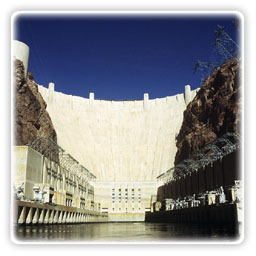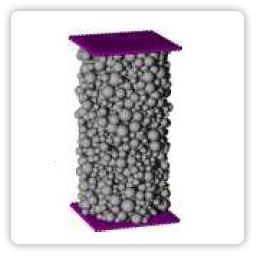Concrete

In order to be able to model concrete under various loading modes, a virtuous understanding of the properties and behaviours of concrete as a material is an essential tool.
Introduction to concrete
Concrete is a universal composite material which can be made almost everywhere in the world; as of 2005, about 6 billion cubic meters of concrete are made each year, which equals one cubic meter for every person on Earth. [1]
The versatility of concrete is the main reason of its pretentiousness, ostentation, and energy competence; these traits have ensured that it is of a great and increasing importance to be used for all types of structures.
Nowadays, concrete structures form the basis of our modern civilisation:
- most of our houses, flats, offices, factories, hospitals, schools, roads, and bridges are made of concrete;
- the train that runs on rails is supported by concrete railway-sleeper, or even crossing over a railway concrete bridge;
- also our shipping industry depends on artificial concrete made, harbours protected by breakwaters structures made of concrete.
In the simplest form, concrete is made of a mixture of coarse aggregates known as gravel, fine aggregate which is known as sand, Portland cement, and water, in which the cement reacts with the water and air creating paste. The paste, acting like a glue, hardens due to chemical reaction between cement and water and binds the aggregates together into a monolithic whole, rock-like mass which is known as concrete. [2]
Figure 1, below, presents basic concrete components.

Figure 1 - Concrete components: water, cement, fine aggregate (sand) and coarse aggregate (gravel or crushed stone). [3]
Other material can be added to the concrete mixture, in order to improve the workability and the properties of the final product. These additives are known as concrete admixtures.
Computer modelling of concrete

Computer modelling of concrete, initiation and propagation of cracks, is a challenging and very complex exercise, which has become an area of increased reaserch in recent years.
Difficulties with modelling occur mainly because of the fracture behaviour of concrete under severe loadings and its heterogeneous structure. Looking on the concrete components, see Figure 1, it can be seen that size of componenents, in terms of length, is changing from a few manometers (cement) to the millimiters (aggregate particles). [4] Therefore, it is highly important to take material heterogenity into account when modelling its bahaviuor.
The phenomenom of the propagation of the fracture process of concrete can be modelled using:
- continuous method such as Finite Element Method (Abaqus); or
- discontinuous method such as Discrete Element Method (EDEM, PFC3D).
However, the use of continuous approach gives a good estimate of weakening zone, but fails to characterise the location of fracture. These methods poorly describe behaviour of discontinuous zones.
Continuum theories fail to capture the influence of the spatial scale of heterogeneity on the overall response of heterogeneous materials [16], and as a result, they fail to describe the mechanical behaviour of materials such as polycrystals, polymers, polymeric and metallic foams, granular materials, bones and particle of fibre reinforced composites. [17]
Aifantis (1992) [14] apposes a more detailed approach on the shear banding and localization of deformation problems arising by the use of the classical continuum theory of linear elasticity, explaining that in such theory the localized deformation zones are described as surfaces of discontinuity and the equations lose their validity beyond the point of their inception.
Discontinuous methods, which are based on a particle's description of the medium, are more suitable to study fracturing in a concrete. [5]
The physical mechanism and the influence of the concrete meso-structure can be taken directly into consideration in particle models. Such assemblies of particles can better capture the behaviour of the real material. [15]
For this reason, Discrete Element Method (DEM) would be used in this MEng thesis research.
» Next: Theory